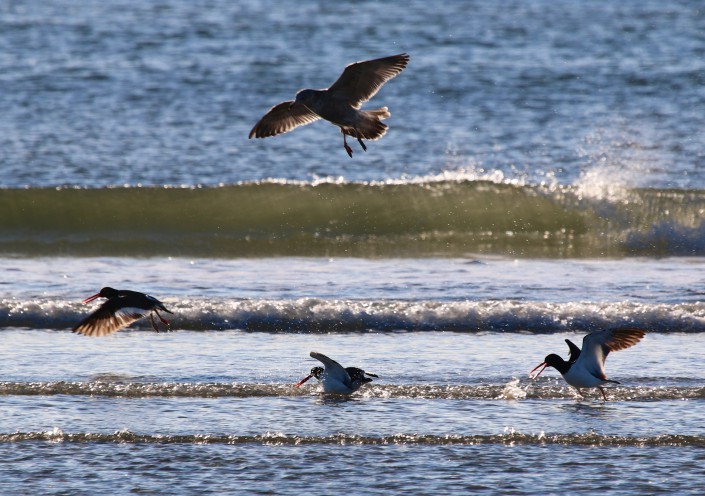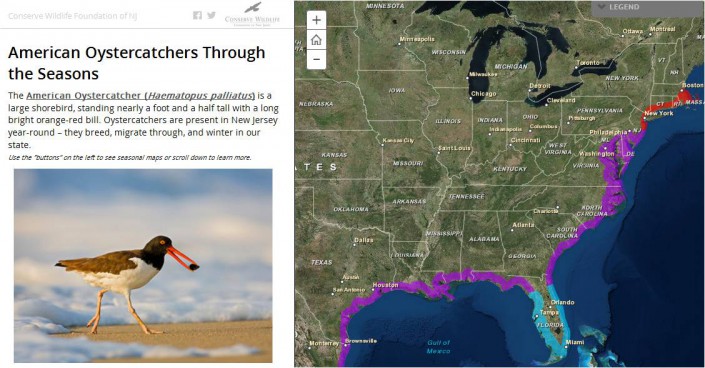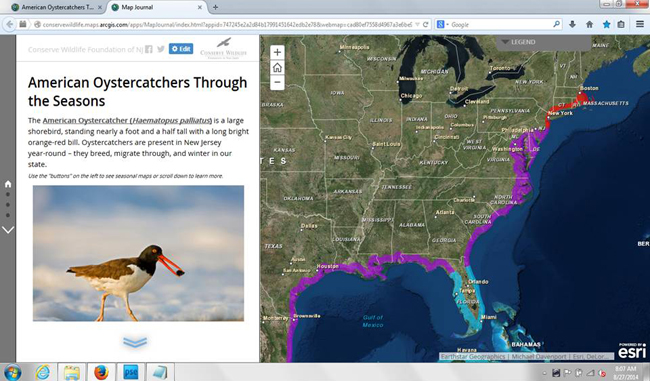A Resilient Shoreline in Stone Harbor for Birds and People
Conservation Partners Collaborate to Improve Beach Habitat for Birds and Provide Flood Protection for Stone Harbor Residents
By: Lindsay McNamara, Communications Coordinator

Beach nesting birds and New Jerseyans who live along the coast both depend on a resilient shoreline — and plenty of sand.
This season, thanks to a grant from the National Fish and Wildlife Foundation (through their Hurricane Sandy Coastal Resiliency Grants Program), a team led by New Jersey Audubon worked with Conserve Wildlife Foundation of New Jersey, The Wetlands Institute, New Jersey Division of Environmental Protection, and the US Fish and Wildlife Service to make the beach community of Stone Harbor Point more resilient for birds and people alike.
Conserve Wildlife Foundation of New Jersey collaborated with New Jersey Audubon to improve beach habitat for Piping Plovers (endangered in New Jersey), American Oystercatchers and the colonially nesting Least Terns and Black Skimmers. Sand from the southernmost tip of the point was moved to create three areas of higher elevation. The new landscape is expected to benefit Red Knots, Semipalmated Sandpipers, Sanderlings, Semipalmated Plovers, Black-bellied Plovers and others.
Stone Harbor, a small beach town along the New Jersey shoreline will see added coastal resiliency benefits and flood protection due to this innovative project that combined the needs for shorebirds with the needs for shore residents. The Stone Harbor project also included the construction of a wide berm of sand near the beachfront parking lot at the far south end of the town. This aspect of the projects aims to increase flood protection for the residents on the developed area of the island.
Learn more about this project on New Jersey Audubon’s blog and in the ShoreNewsToday.com article “Working for the Birds.”
The National Fish and Wildlife Foundation (NFWF) is a non-profit organization created by Congress to preserve and restore our nation’s native wildlife species and habitats. NFWF is one of the largest funders of wildlife conservation in the world. They fund science-based projects and community-driven solutions.
Lindsay McNamara is the Communications Coordinator for Conserve Wildlife Foundation of New Jersey.










